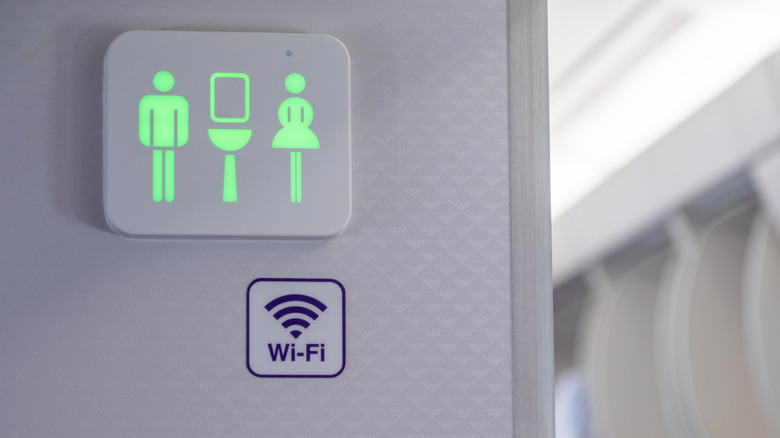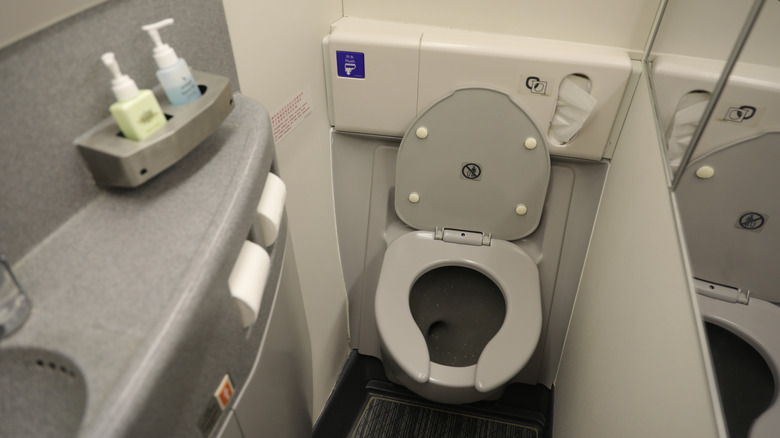Ever Wonder How Toilets On Airplanes Actually Work?
However demoralizing it may be to use that airplane bathroom, the very fact that airport terminal fast food is offered, let alone become a tradition for so many, is a testament to the modern age of plumbing. And thank goodness for this reality, especially considering how people often pass more gas on a plane. While eating a burrito and drinking soda before a cross country flight should probably have some questionable ethics attached to it, at least we have airplane toilets. Without access to a bathroom, there'd be no access to food and water, and suddenly a flight from Chicago to Mumbai doesn't just become unpopular but virtually impossible.
Outside of the politics surrounding the worst times to use the bathroom during a flight, the very concept and logistics of the cabin toilet can confuse any non-engineer. It turns out, the modern day aviation plumbing system is reliant on one rule of physics and simpler than you think.
How do airplane toilets flush?
That ever-identifiable airplane toilet blast comes from an engineered vacuum assisted by the power of pressure. In 1975, inventor James Kemper patented the modern system with the idea to take waste from all toilets and centralize it to one bank. In 1982, the apparatus was installed on a plane for the first time. Here's how it works.
The pressure difference inside and outside the cabin increases after takeoff, and the plane pumps in pressurized air to maintain comfortable breathing and combat lowering pressure outside the cabin. When an airplane toilet flushes, the bowl's valve must open for an instant to collect the waste and transfer it to a storage bin below. Per the ideal gas law, when a low and high pressure environment interact, the air from the higher pressure environment floods into the lower pressure area to create powerful suction. This law explains how airplane bathrooms work at altitudes around 40,000 feet. When flushed at levels where the plumbing can't bank on the pressure difference, cabin toilets use a vacuum system to transfer the waste.
That difference in pressure is the same reason why a bag of chips will puff up to such a dramatic degree on a plane. The pressure inside the bag increases because, even with pressurized air pumping in, cabin pressure levels remain lower than they'd be at ground level. When you open that bag of chips, it explodes because the high pressure air wants to escape as soon as possible.
So ... where does airplane bathroom waste go?
It's time to debunk one of the nastiest rumors of airline travel: Flushing the cabin toilet releases waste straight into the sky. That sick and twisted version of "Cloudy with a Chance of Meatballs" would break a laundry list of FAA regulations. The waste is instead transferred to a tank at either the front or back of the plane and stored until landing. From there, vehicles called honey wagons arrive at the tarmac to transfer the waste into sewage tanks for processing.
The modern-day vacuum system ensures no leaking blue ice exits the plane. Blue ice refers to the substance formed when a combination of sewage and blue disinfectant (the kind used in a porta-potty) leaves the plane and freezes in the cold air. Knowing this should shed some light on what it really means when your flight attendant mentions the blue room. Thankfully, the consistent threat of blue ice falling from the sky ceased in the 1980s and is now an extremely rare occurrence.


